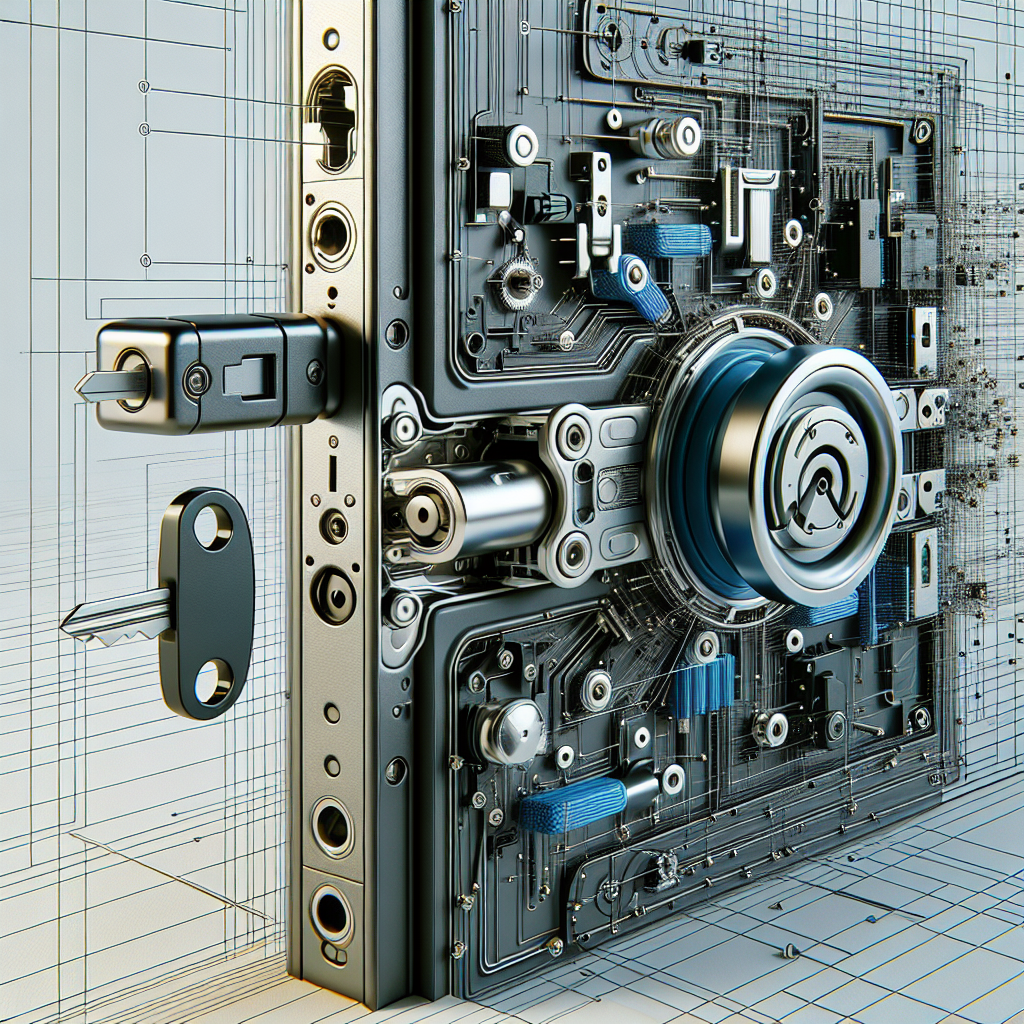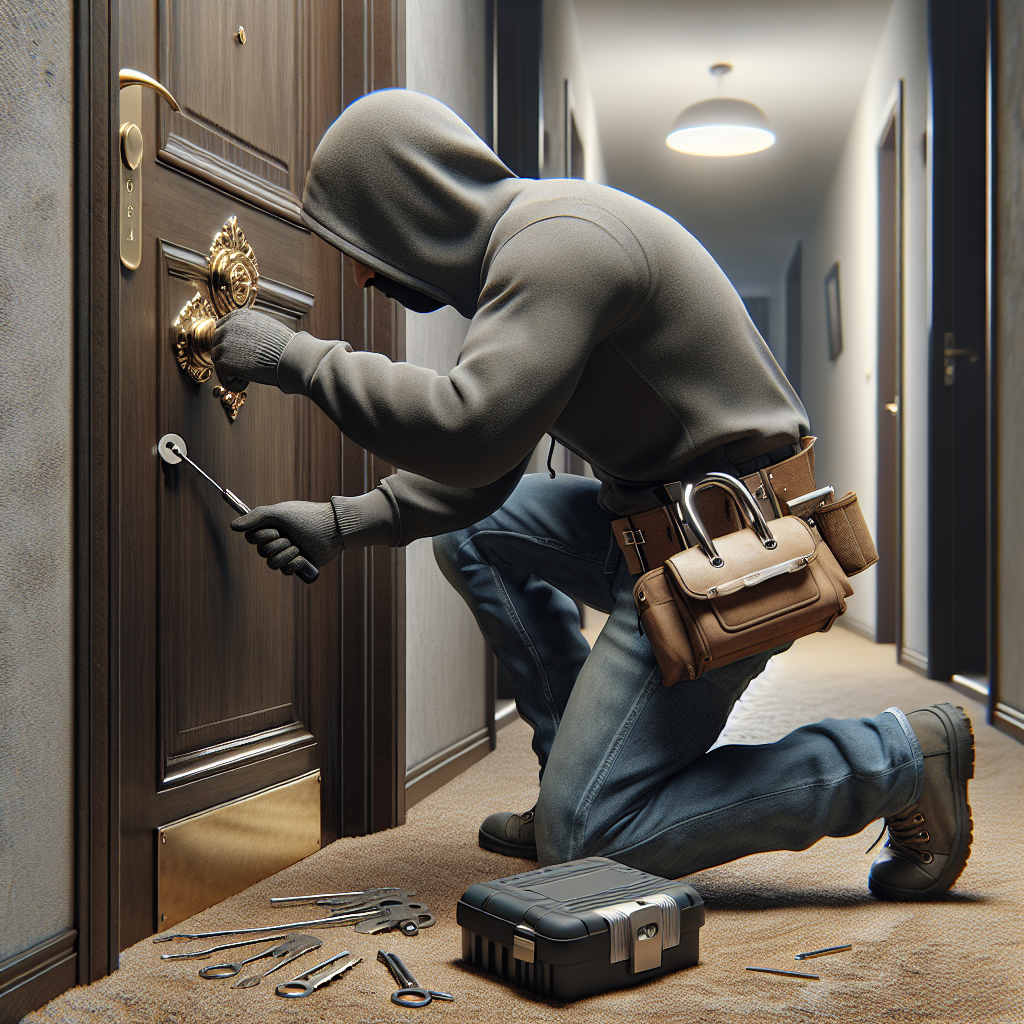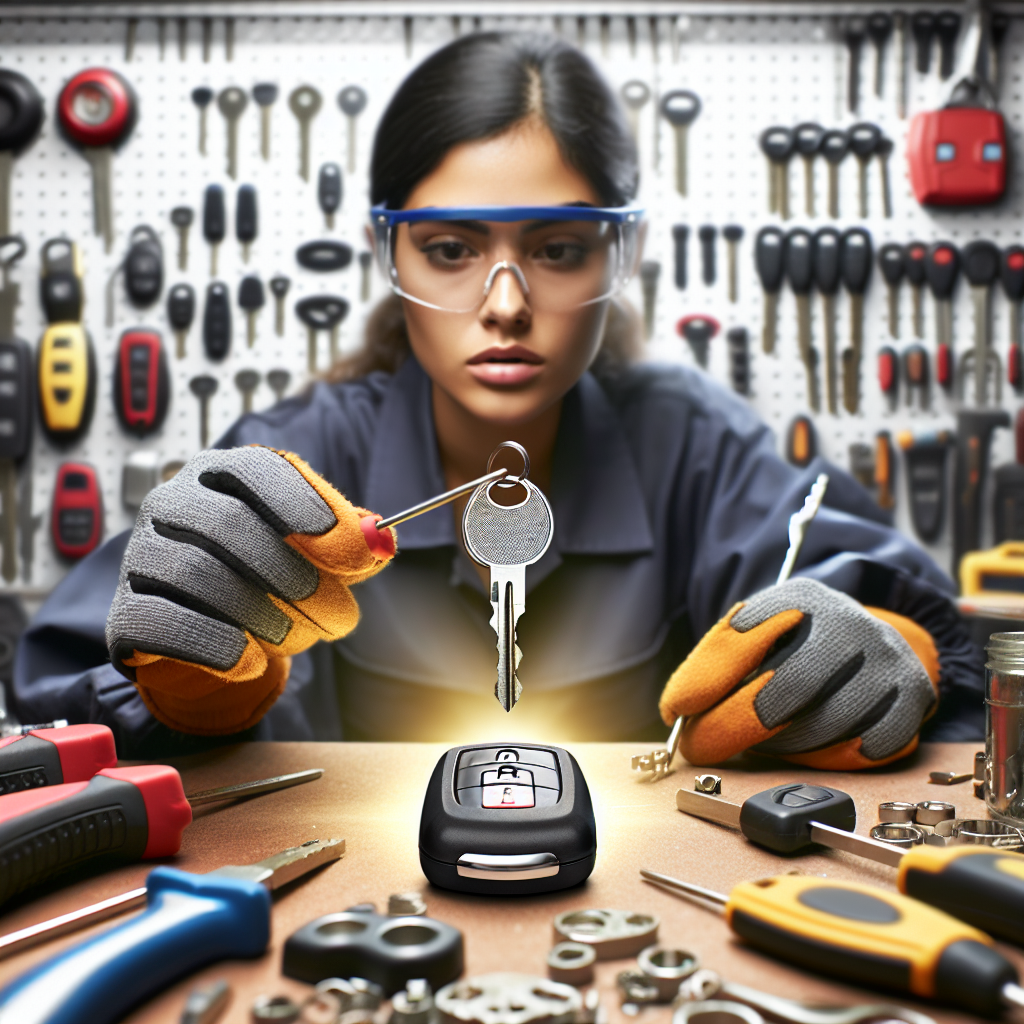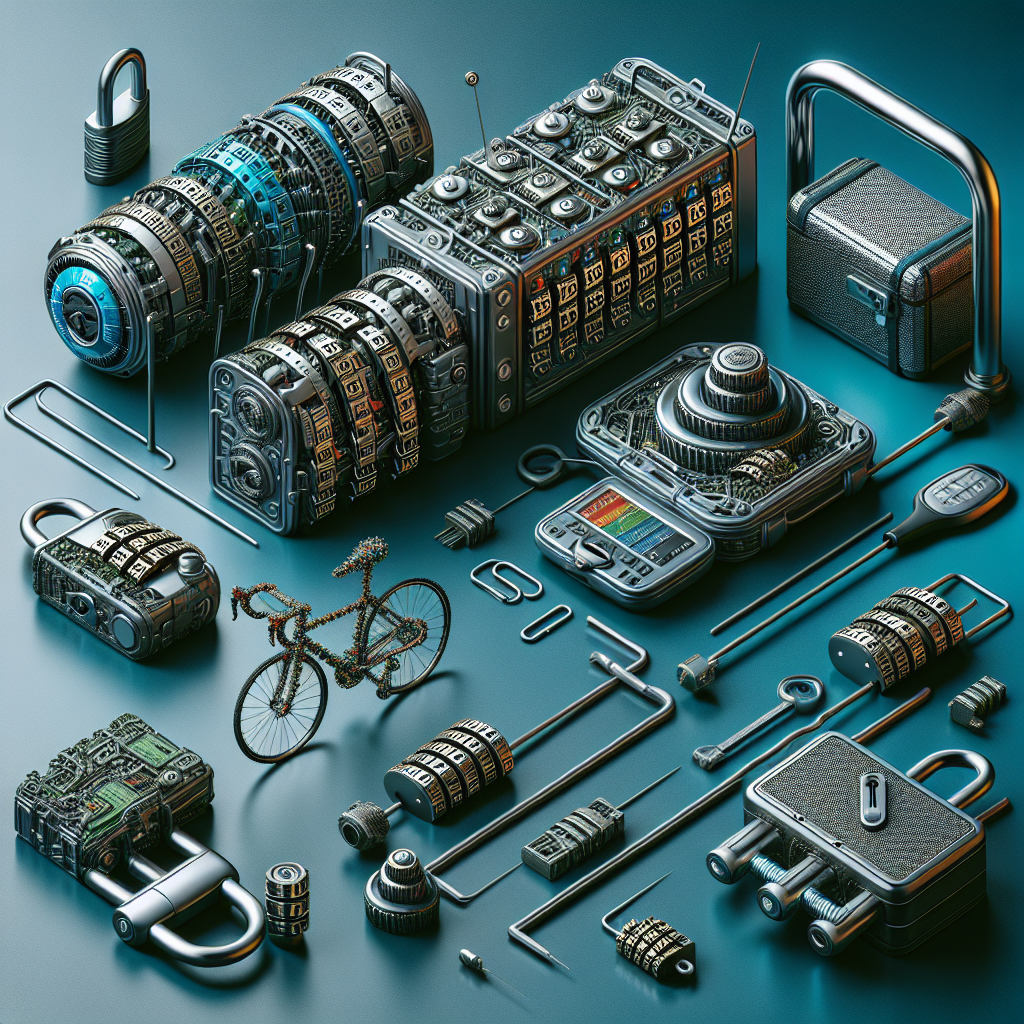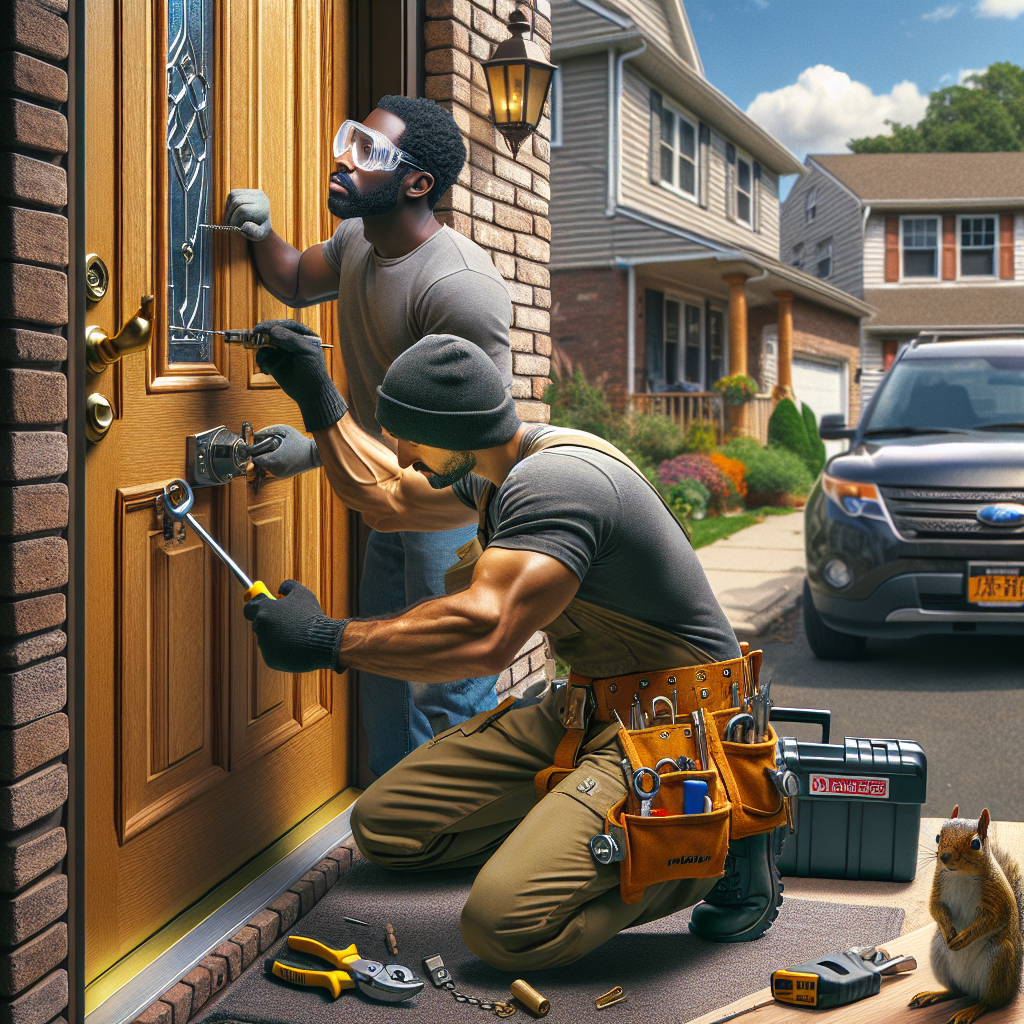Childproofing locks are an essential component in creating a safe environment for the little ones who are naturally curious and have the penchant for exploring every nook and cranny of their domiciles. In Hempstead, a borough with a burgeoning population of young families, the significance of these safety mechanisms takes on increased importance. Unique to these suburban interiors are the diverse range of household spaces—from cozy apartments to sprawling family homes—each presenting its own set of challenges when it comes to childproofing. Sophisticated locks specifically designed to thwart the efforts of tiny hands offer peace of mind to parents and guardians, ensuring that pharmaceuticals, cleaning supplies, and other potential hazards remain inaccessible to children, thus mitigating the risk of home accidents which are unfortunately all too common.
Moving on from the foundational understanding of childproofing locks and their pertinence in Hempstead homes, we now pivot to discussing the key aspects that need to be considered when selecting the right kind of safety devices for various areas of a residence. The upcoming section of the article will delve into the factors such as the types of locks best suited for different cabinets, drawers, and doors, as well as the materials and installation techniques that optimize safety for the target age group. We’ll explore the role local regulations in Hempstead may play in influencing safety standards and how integrating technology into childproofing can enhance protection. Additionally, we’ll provide insights on common pitfalls to avoid when childproofing a home, and the crucial balance between safety and accessibility for adults within the household. Stay tuned as we guide you through these vital takeaways to help ensure your home is a secure haven for your little explorers.
Key Takeaways
1. Childproofing locks serve as an essential first line of defense in Hempstead homes, protecting young children from potential hazards. These specialized locks are designed to prevent infants and toddlers from accessing cabinets, drawers, and certain rooms that may contain dangerous items such as cleaning supplies, medications, or sharp objects.
2. The installation of corner and edge protectors is emphasized as critical in homes with young children to safeguard against injuries from falls or collisions with sharp furniture edges. These protective devices can significantly reduce the risk of head and bodily injuries by cushioning the impact against hard surfaces.
3. In addition to internal safety measures, window guards are highlighted for their importance in preventing falls from windows, especially in multi-story dwellings. The article notes that local building codes may dictate specific requirements for these guards to ensure they offer adequate protection while allowing for emergency escape if necessary.
4. The importance of securing large furniture and electronics to the wall is underlined to prevent tipping accidents, which can be especially dangerous and potentially fatal for young children. The use of anti-tip kits or brackets can stabilize heavy items, making them less likely to fall over if a child attempts to climb or pull on them.
5. Regular maintenance checks of childproofing equipment are strongly recommended to guarantee their continued effectiveness over time. It’s pointed out that over time, wear and tear, as well as changing household needs, may necessitate the replacement or updating of safety devices to ensure the consistent safety of children in the home.
How Can You Ensure Your Hempstead Home Is Fully Childproofed with Safety Locks?
Identifying Potential Hazards in Hempstead Homes
In any home, but particularly those in Hempstead, identifying potential hazards is the first step towards childproofing. As a coastal area, homes may have unique features such as boat storage or pool access which need special attention. Inside the home, cabinets, drawers, and appliances represent risks where children might access harmful substances or sharp objects. Electrical outlets, window openings, and staircases are also common areas where children can be harmed if not properly safeguarded.
Choosing the Right Childproofing Locks and Devices
Selecting the appropriate childproofing locks and devices is crucial to securing a safe environment for children. In the kitchen, cabinet locks can prevent access to dangerous chemicals and knives. For refrigerators, appliance latches keep children from accessing food or drinks that might pose choking hazards. Sliding door locks and window guards can prevent falls, and outlet covers can protect curious fingers from electrical shock. When choosing these devices, it is important to consider the age and developmental stage of the child to ensure that locks are effective yet still allow adults easy access in case of emergencies.
Installation and Maintenance of Childproofing Equipment
Proper installation of childproofing equipment is as important as the devices themselves. Safety locks and latches should be attached securely to withstand tugs and pulls from children. Regular maintenance checks ensure these devices continue to function correctly over time, especially because repeated use can lead to wear and tear that might render a safety device ineffective. It’s advisable for Hempstead parents to periodically reassess their childproofing measures as their children grow and as hazards evolve.
Childproofing for Different Areas of the House
Each area of a Hempstead home requires unique childproofing strategies. In the bathroom, toilet seat locks can prevent accidental drownings, while non-slip mats can reduce the risk of falls. Living areas might need furniture anchors to prevent tip-over accidents, and hearth gates can protect against burns from fireplaces. Nurseries should have cribs away from windows and secure window locks to prevent escapes or falls. For homes with stairs, installing safety gates at both the top and bottom can prevent dangerous falls.
Educating Caregivers and Family Members on Safety Measures
Childproofing is not just about installing the right hardware; it’s also about creating a culture of safety. All caregivers, including parents, grandparents, babysitters, and even older siblings, should be educated on the function and importance of each childproofing measure in place. This might include demonstrating how to properly secure gates or locks and discussing the reasons behind each safety decision, as well as emergency preparedness should a child bypass a safety measure.
Local Resources for Childproofing in Hempstead
Residents of Hempstead can take advantage of local resources for childproofing their homes. Home safety inspections, often provided by local health departments or child welfare organizations, can provide tailored advice and assistance. Additionally, local home improvement stores may offer workshops on child safety and home childproofing that could be beneficial, especially for new or expecting parents.
What Are Some Essential Tips for Childproofing Hempstead Homes?
- Conduct a thorough walk-through of your Hempstead home to identify potential hazards and decide on the necessary childproofing measures.
- Install safety gates at the top and bottom of staircases, and ensure they are sturdy and difficult for children to open.
- Secure furniture to walls with anchors to prevent tipping hazards, especially in children’s bedrooms and play areas.
- Use door knob covers and multi-purpose straps to restrict access to rooms and objects that pose a risk to children.
- Employ corner and edge bumpers on furniture and fireplace hearths to prevent injury from sharp edges.
- Install outlet covers and plates to prevent electrical injury and consider tamper-resistant receptacles for a more permanent solution.
- Ensure all pools and outdoor water features have adequate barriers and locks, as well as alarms if possible.
- Keep emergency numbers, including poison control, nearby and ensure that all caregivers are familiar with them.
“`html
What Types of Childproofing Locks Are Available in Hempstead?
There are various types of childproofing locks available in Hempstead, including cabinet locks, drawer locks, window guards, door knob covers, and toilet locks. Each is designed to prevent children from accessing potentially dangerous areas or items in the home.
How Can I Assess My Home for Child Safety Risks?
To assess your home for child safety risks, start by crawling around at a child’s level to see potential hazards, secure heavy furniture to the walls, ensure small objects that pose a choking risk are out of reach, and check for accessible cabinets with harmful substances.
Are Childproofing Products Difficult to Install?
Most childproofing products are designed for easy installation, often requiring minimal tools. Manufacturers typically provide instructions, and there are also professional services available in Hempstead that can handle installation.
Is It Enough to Only Childproof Our Kitchen and Bathrooms?
While kitchens and bathrooms pose significant risks and should be childproofed, it’s important to secure all areas of the home your child may access, including living rooms, bedrooms, and any low windows or doors, to ensure complete safety.
Can I Use the Same Childproofing Techniques for Pets?
Some childproofing techniques like locking cabinets can also be effective for pets, but pet-proofing may require additional measures like securing trash cans and removing toxic plants or substances that are of specific risk to animals.
How Long Should I Keep My Home Childproofed?
Keep your home childproofed until your children are old enough to understand and adhere to safety rules, which is typically around the age of 4 to 6, but this varies depending on the child’s development and the specific hazards in your home.
Will Childproofing Affect the Aesthetics of My Home?
While childproofing devices are often visible, many products are now designed to be less obtrusive and blend in with home decor. Safety should be the priority, but there are options for those concerned about aesthetics.
Are There Any Local Regulations in Hempstead Regarding Childproofing?
Hempstead may have codes or guidelines on safety features such as window guards, particularly in rental units. It’s best to check with local authorities or a legal advisor for the most current regulations regarding childproofing.
How Often Should Childproofing Devices be Inspected or Replaced?
Childproofing devices should be inspected regularly to ensure they are still functional, especially after heavy use. Replace them if they show signs of wear, damage, or if they no longer secure effectively.
What Should I Do if My Child Learns How to Open Childproofing Locks?
If your child is able to bypass childproofing locks, either replace them with more complex mechanisms or add additional layers of security, such as moving dangerous items to unreachable areas and continuing to supervise your child’s activities closely.
Final Thoughts
Childproofing your Hempstead home is an essential step in cultivating a safe environment where your young ones can explore and grow. Harnessing the right locks and safety products, coupled with vigilant supervision, can significantly mitigate the risks present in everyday living spaces. It’s important to take a comprehensive approach, securing not just the obvious areas like the kitchen and bathroom but attending to all corners of your home where potential hazards might lurk.
Moreover, staying informed on local safety regulations and remaining aware of the evolving capabilites of your child are key elements to maintaining a safe household. It’s a continuous process, where the safety measures grow and adapt in conjunction with your child’s development. As communities like Hempstead strive for safer homes, parents and guardians play a critical role in these prevention efforts, ultimately leading to a secure and nurturing setting for children to thrive.
“`


